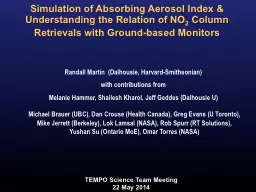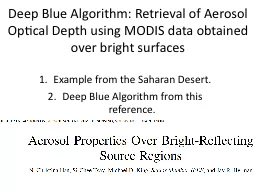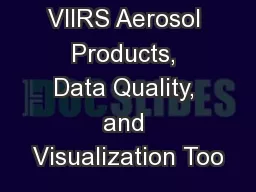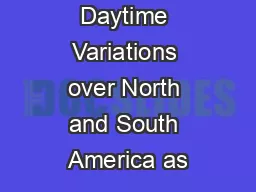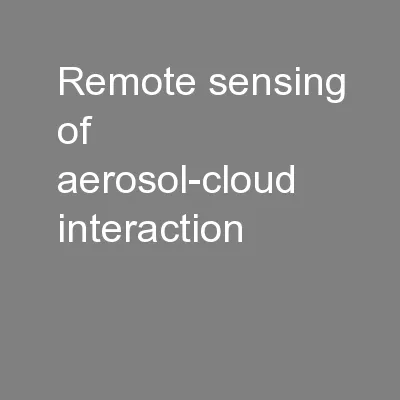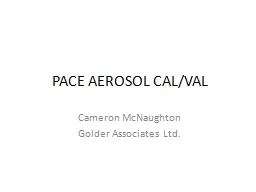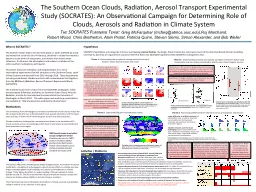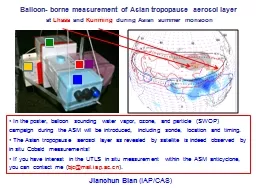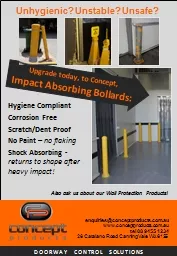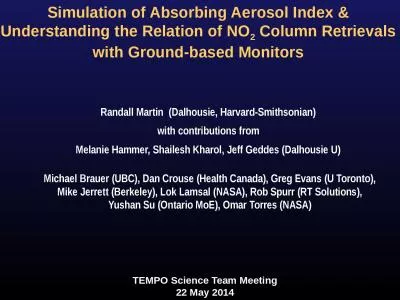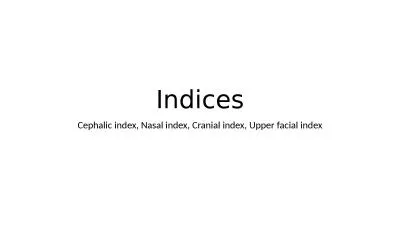PPT-Simulation of Absorbing Aerosol Index & Understanding t
Author : tawny-fly | Published Date : 2016-05-26
2 Column Retrievals with Groundbased Monitors Randall Martin Dalhousie HarvardSmithsonian with contributions from Melanie Hammer Shailesh Kharol Jeff Geddes
Presentation Embed Code
Download Presentation
Download Presentation The PPT/PDF document "Simulation of Absorbing Aerosol Index &a..." is the property of its rightful owner. Permission is granted to download and print the materials on this website for personal, non-commercial use only, and to display it on your personal computer provided you do not modify the materials and that you retain all copyright notices contained in the materials. By downloading content from our website, you accept the terms of this agreement.
Simulation of Absorbing Aerosol Index & Understanding t: Transcript
Download Rules Of Document
"Simulation of Absorbing Aerosol Index & Understanding t"The content belongs to its owner. You may download and print it for personal use, without modification, and keep all copyright notices. By downloading, you agree to these terms.
Related Documents

